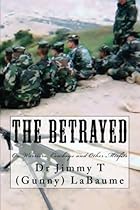by Alan Savory via the Savory Institute Blog
Savory Institute Founder and President Allan Savory’s presentation at TED2013 generated an overwhelming amount of positive comments and many basic questions about Holistic Management and its practices. In this blog post Savory addresses “What do animals eat when you begin holistic planned grazing on largely bare land?”
The lack of need to feed the livestock or to reseed bare ground understandably puzzles many people. It is easiest explained in this manner. If there is a very poor area of land with only desert bushes, weeds and perhaps annual grasses in a good season it is generally supporting a few animals feeding on what is available over the year. Using the livestock hooves mainly to begin growing grasses and other plants we first concentrate the animals to get more “herd effect” of trampling, dunging, urinating as any gardener would understand to get plants growing. And we move the animals to the grazing plan to ensure they always have feed.
It works like this: assume you have say, only ten animals able to be supported on an area of largely bare land for a year. If you divide the area into four there is enough forage to hold those animals on a quarter of the land for 90 days. This means the plants on the remainder of the land are free to grow unimpeded by grazing or browsing which they do. And on the quarter you are holding the animals for 90 days feeding on what is there you have the animals more concentrated with their hooves producing better conditions for plants to grow and dung and urine more evenly spread. Now picture that with the same land divided into 30 divisions and the same principle applies. Now however the animals are kept on one of those divisions for a day or two only and all plants get anywhere from two to three months to grow out unimpeded. And the animals are now at 30 times their past density even with numbers unchanged.
Using the above principles, and with help from a large ranching company, I tested holistic planned grazing to a breaking point trying to see if we could make it fail before ever taking into the public arena. We did this by selecting 4,000 acres of the worst land we could where perennial grass had completely disappeared. By using the above principle we increased the livestock 300% on that land in the first year and dense perennial grassland developed and became healthier and healthier over the next 8 years in good and bad rainfall years. No feeding and no reseeding or any other measures were used – only increasing the animals, concentrating them and planning their moves over the land to ensure no plants were exposed to being grazed for more than two days and all plants received two to three months of freedom to grow during the growing season of about four months. And because 3 X the number of animals were, when grazing, on a thirtieth of the land the greatly increased animal impact or herd effect caused millions of new plants to grow and produce enough feed to carry the animals through 8 to 9 months of no rain.
Such conditions of extreme desertification are handled in this manner and where it involves pastoralists herding their animals it becomes much easier and faster than on ranches using fencing.
Learn more about Holistic Management and Holistic Planned Grazing via Frequently Asked Questions.
Related articles
- Managing the Ranch as a Business: The Role of Time (landandlivestock.wordpress.com)
- Managing the Ranch as a Business: The Role of Predator and Prey (landandlivestock.wordpress.com)
- Cell Grazing: Part III. Why More Pastures? (landandlivestock.wordpress.com)
- How Cows Could Repair the World: Allan Savory at TED (newswatch.nationalgeographic.com)
- Managing the Ranch as a Business: The Brittleness Scale (landandlivestock.wordpress.com)
- Cell Grazing: Part I. Introduction (landandlivestock.wordpress.com)
- Cell Grazing: Part VI. Myths, Misconceptions, and Untruths about SGM (landandlivestock.wordpress.com)
- Fighting the growing deserts, with livestock: Allan Savory at TED2013 (ted.com)
- Managed Grazing – Part 4 of 5 – Managing Pasture Plants (landandlivestock.wordpress.com)
- TED Talk Teaches Us to Disparage the Desert (kcet.org)

 A Handbook for Ranch Managers
A Handbook for Ranch Managers Combat Shooter's Handbook
Combat Shooter's Handbook Planned Grazing: A Study Guide and Reference Manual
Planned Grazing: A Study Guide and Reference Manual The Betrayed: On Warriors, Cowboys and Other Misfits
The Betrayed: On Warriors, Cowboys and Other Misfits
Pingback: How To Teach Livestock to Eat Weeds | Land & Livestock International, Inc.